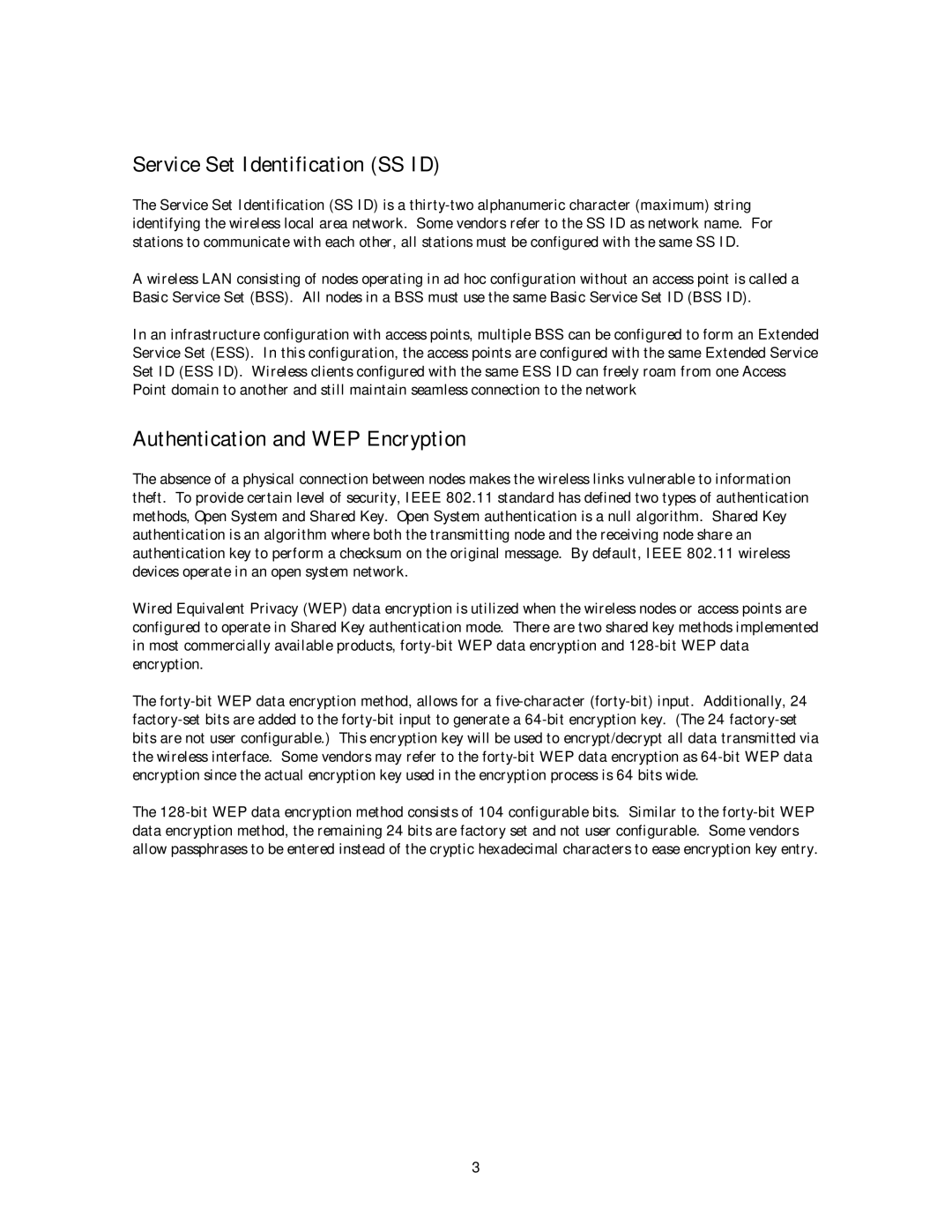Service Set Identification (SS ID)
The Service Set Identification (SS ID) is a
A wireless LAN consisting of nodes operating in ad hoc configuration without an access point is called a Basic Service Set (BSS). All nodes in a BSS must use the same Basic Service Set ID (BSS ID).
In an infrastructure configuration with access points, multiple BSS can be configured to form an Extended Service Set (ESS). In this configuration, the access points are configured with the same Extended Service Set ID (ESS ID). Wireless clients configured with the same ESS ID can freely roam from one Access Point domain to another and still maintain seamless connection to the network
Authentication and WEP Encryption
The absence of a physical connection between nodes makes the wireless links vulnerable to information theft. To provide certain level of security, IEEE 802.11 standard has defined two types of authentication methods, Open System and Shared Key. Open System authentication is a null algorithm. Shared Key authentication is an algorithm where both the transmitting node and the receiving node share an authentication key to perform a checksum on the original message. By default, IEEE 802.11 wireless devices operate in an open system network.
Wired Equivalent Privacy (WEP) data encryption is utilized when the wireless nodes or access points are configured to operate in Shared Key authentication mode. There are two shared key methods implemented in most commercially available products,
The
The
3
